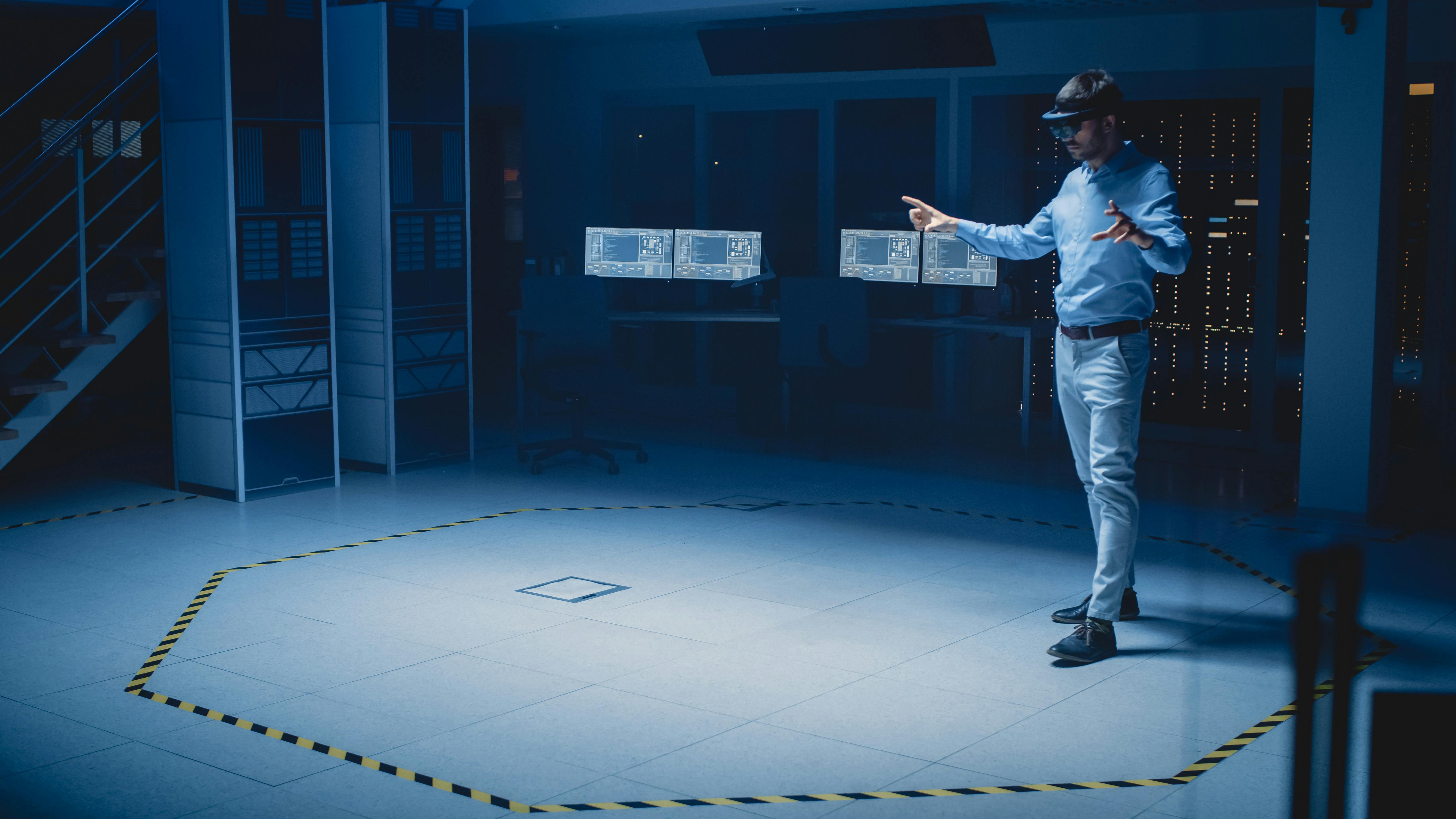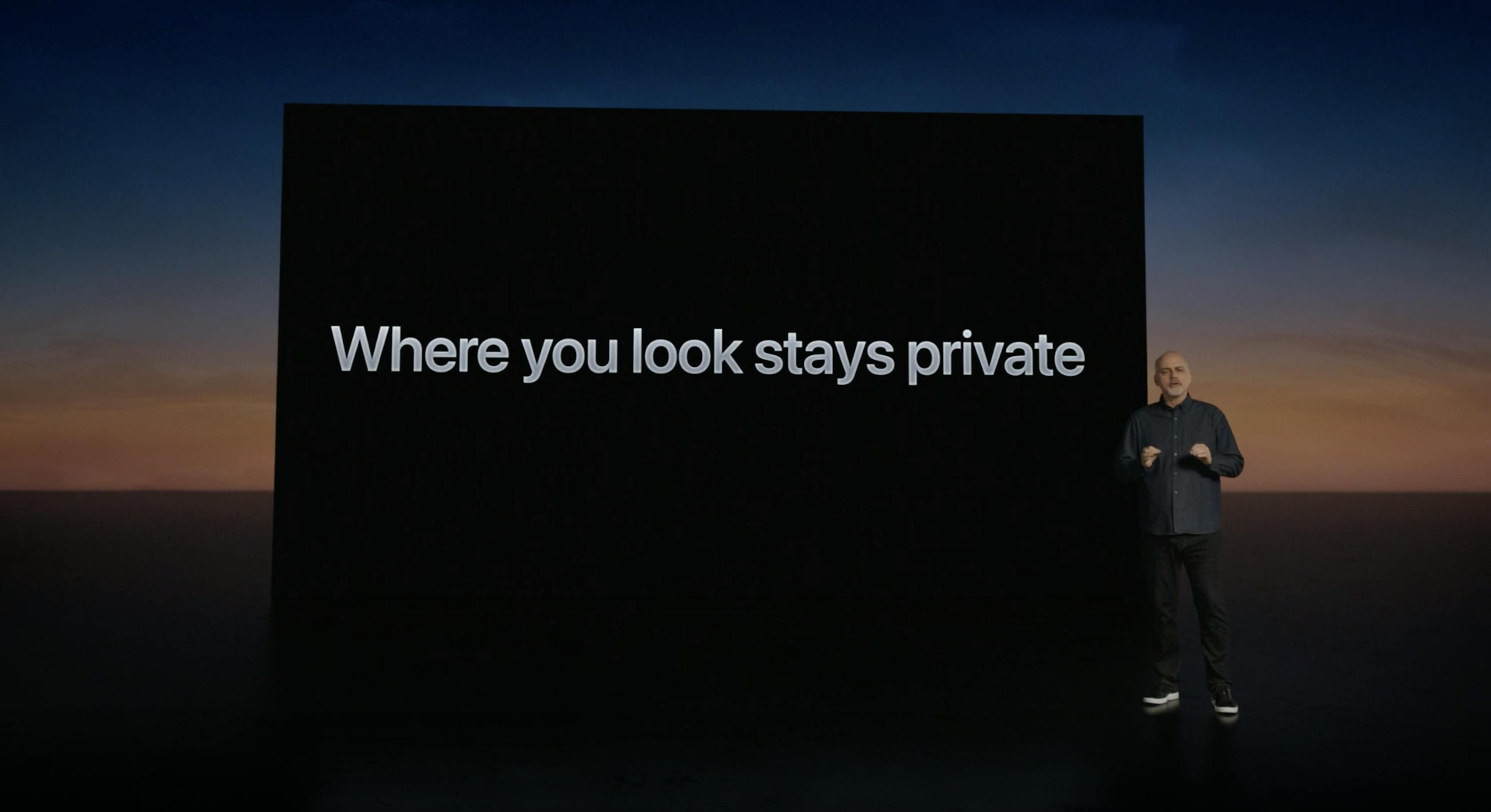What is spatial computing?
The unveiling of Apple's latest product, Vision Pro, has created significant buzz in the tech industry. Per Apple, this headset aims to “seamlessly blend digital content with your physical space.” While they haven't announced (almost) anything we haven't seen before, it showcased Apple's deeply ingrained values and evoked memories of their iconic slogan, "Think different." Someone was quick to notice that during the WWDC presentation, Apple CEO Tim Cook and other speakers made no mention of the buzzword "metaverse”. Interestingly, words like virtual reality, mixed reality or XR also were nowhere to be found. Instead, they focused on the concept of "spatial computing," leaving us with a compelling question: What exactly is spatial computing?
What is spatial computing?
Spatial computing was first defined in 2003 by MIT researcher Simon Greenwold in his graduate thesis as “human interaction with a machine in which the machine retains and manipulates referents to real objects and spaces. It is an essential component for making our machines fuller partners in our work and play.” At its core, spatial computing enables us to merge the digital and physical worlds, creating an immersive and interactive experience that goes beyond augmented and virtual reality technologies. It allows machines to understand and interact with real objects and spaces, becoming fuller partners in our work and play.
Spatial computing opens up a realm of possibilities for seamless integration and interaction between the digital and physical realms. It goes beyond the mere overlaying of digital information onto our surroundings, enabling us to manipulate and interact with the physical world in conjunction with digital content. This immersive and natural experience has far-reaching implications across various industries and aspects of our daily lives.

Exploring the Applications of Spatial Computing in Various Industries
One of the applications that instantly comes to mind when speaking of spatial computing is design and architecture. Imagine being an architect, able to visualize your designs in their intended location, interacting with virtual elements, and making real-time adjustments. Spatial computing empowers architects and designers to walk through virtual structures, experiencing the scale, proportions, and aesthetics before construction even begins. This level of immersion and interactivity enhances the design process, enabling more informed decision-making and fostering a deeper understanding of the final product. The same can be applied when designing a car for instance.
Education and training also stand to benefit significantly from spatial computing. Traditional teaching methods usually rely on static textbooks and two-dimensional content, limiting the comprehension and engagement of students. With spatial computing, complex concepts can be brought to life through interactive virtual models, immersive simulations, and hands-on experiences. Students can engage with the subject matter in a tangible way, fostering deeper understanding and enhancing learning outcomes.
The impact of spatial computing extends far beyond design and education. Industries such as healthcare, manufacturing, and logistics are leveraging this technology to revolutionize their processes and improve outcomes. In healthcare, surgeons can utilize spatial computing to visualize and manipulate medical imaging data in real-time during surgeries, enhancing precision and patient safety. In manufacturing, workers equipped with spatial computing headsets can access real-time instructions, collaborate with remote experts, and streamline production processes. In logistics, spatial computing optimizes warehouse operations by providing workers with augmented reality overlays, guiding them to efficiently locate items and fulfill orders.
The Role of Hand Tracking in Spatial Computing
Hand tracking is a vital component of spatial computing as it enhances the user's ability to interact naturally with the digital environment. By accurately tracking the movements and gestures of the user's hands, spatial computing systems can enable intuitive and immersive interactions, further blurring the line between the physical and digital world.
Traditionally, user interactions with digital content were limited to mouse clicks, keyboard inputs, or touch-based interactions on screens. However, with the advancement of spatial computing, hand tracking is emerging as a powerful technology that enables users to manipulate virtual objects, navigate menus, and perform various actions using natural hand movements.
Hand tracking also enables more precise and nuanced interactions. Users can grab, move, rotate, and resize virtual objects with natural hand movements, providing a level of dexterity and control that was previously limited in traditional input methods. This opens up possibilities for intricate design work or even virtual training scenarios where precise hand movements are crucial.
Moreover, hand tracking enhances social and collaborative experiences in spatial computing. Users can communicate and gesture with each other using their hands, fostering a sense of connection and presence within shared virtual spaces. Collaboration becomes more natural and fluid as participants can point, gesture, and interact with virtual objects as if they were physically present.
In addition to these user-centric benefits, hand tracking also has implications for accessibility. Traditional input methods may present barriers for individuals with physical limitations or disabilities. By leveraging hand tracking technology, spatial computing experiences can be more inclusive, allowing users to engage with digital content and environments without the need for specialized hardware or complex gestures.
Overcoming Challenges in the Adoption of Spatial Computing Technology
Adoption of spatial computing does come with its share of challenges. Integration with existing infrastructure and workflows poses a significant hurdle for businesses looking to embrace this technology. It requires a reevaluation of processes, investment in compatible hardware and software solutions, and comprehensive training programs for employees. Addressing concerns related to privacy, security, and data management is also crucial to ensure user trust and compliance with regulations.

Luckily, Apple has taken privacy-by-design extremely seriously, aiming to ensure that your future devices work solely for your benefit, without compromising your privacy to unseen parties.
As we embark on this spatial computing revolution, it is essential to consider the ethical and societal implications. Responsible development and deployment of spatial computing solutions require collaboration between technology companies, researchers, policymakers, and users. Together, we can ensure that spatial computing aligns with our values and contributes to a more immersive, connected, and inclusive future.
Related articles
Revolutionizing Rehabilitation and Therapy with Immersive VR and Hand Tracking Technology
We explored the transformative potential of immersive virtual reality and hand tracking technology in the field of rehabilitation and therapy. Discover how SpectreXR is leveraging these technologies to enhance motor skills rehabilitation, and improve cognitive function. Experience the future of therapy and unlock new possibilities for patient care.
How to Publish Your VR Apps on Sidequest: A Step-by-Step Guide for Indie Developers
The blog post provides a guide for indie VR developers on how to publish their VR applications on Sidequest, a platform for distributing VR content outside of the official Oculus Store, with detailed steps on how to register as a developer, create an app listing, test the app, submit for review, and manage the app after publication.